Ian Lancaster Fleming was born in London on 28th May 1908 and educated at Eton College before spending a formative period studying languages in Europe. His first job is with Reuters news agency, followed by a brief spell as a stockbroker. On the outbreak of the Second World War, he is appointed assistant to the Director of Naval Intelligence, Admiral Godfrey, where he plays a key part in British and Allied espionage operations.

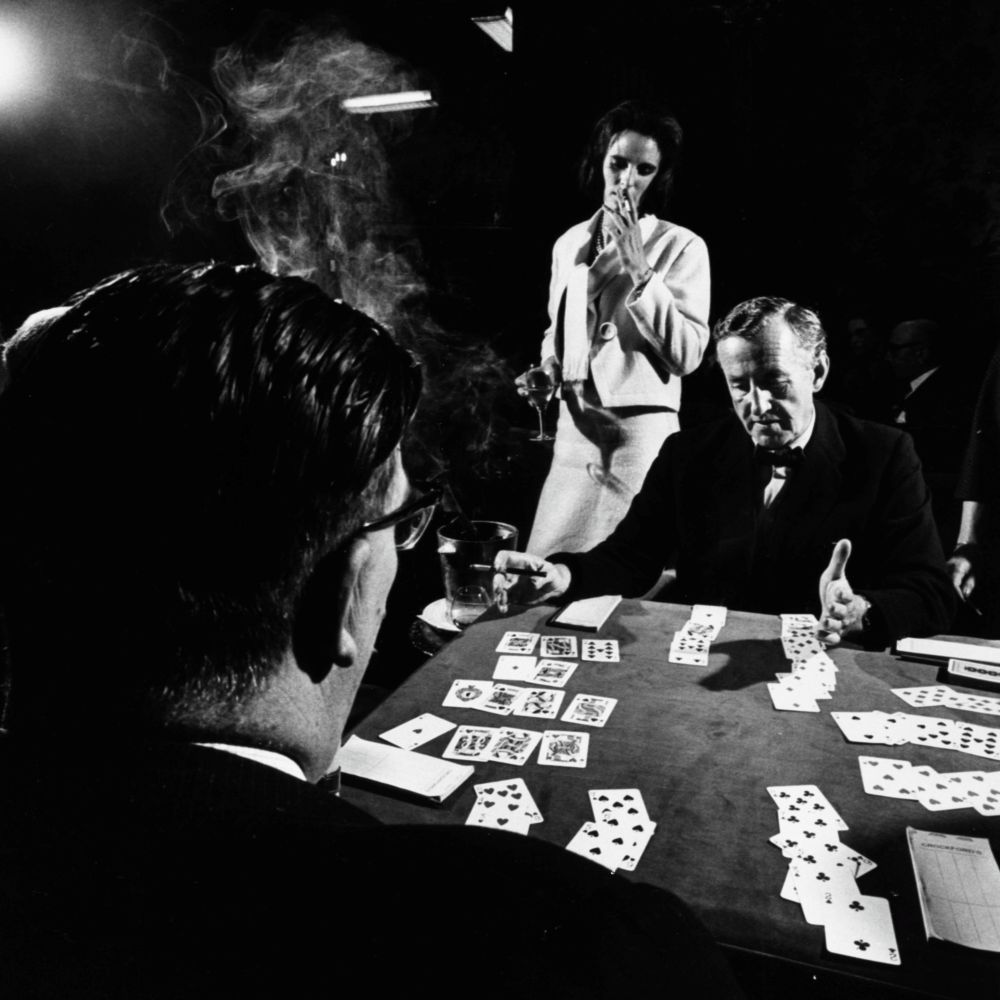
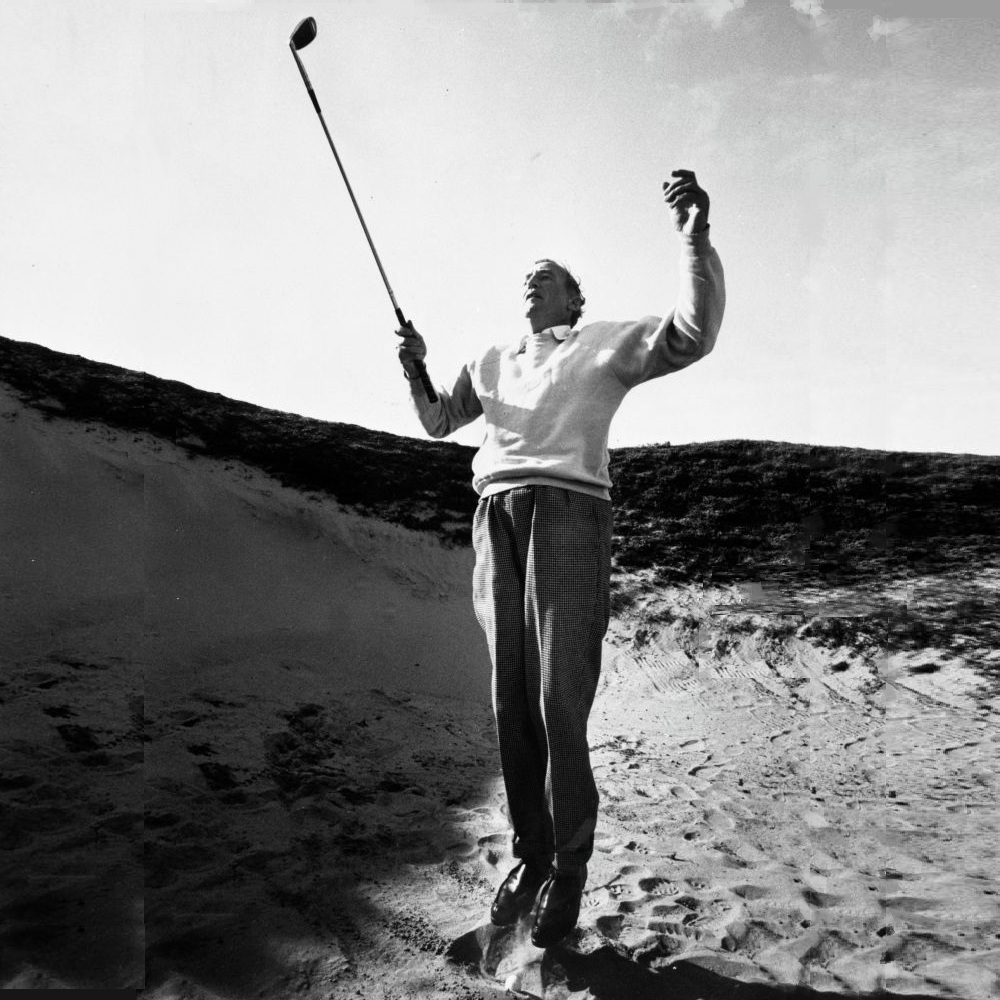
After the war, Ian joins Kemsley Newspapers as Foreign Manager of The Sunday Times, running a network of correspondents who are intimately involved in the Cold War. He marries Ann Rothermere in 1952, and his son Caspar arrives the same year. Ian’s sets out to write ‘the spy story to end all spy stories’ and his first novel, Casino Royale, is written at GoldenEye, his home in Jamaica, where he spends a few months each year. Published in 1953, the book introduces James Bond, Special Agent 007, to the world. The first print run sells out within a month.
Following this initial success, Ian publishes a Bond title every year until his death. ‘I agreed to do one a year for them. Every season now, after the Christmas holidays, I head for GoldenEye with a packet of notes and put old Bond through his paces. Takes two months – January and February. Book’s in the mail by March.’
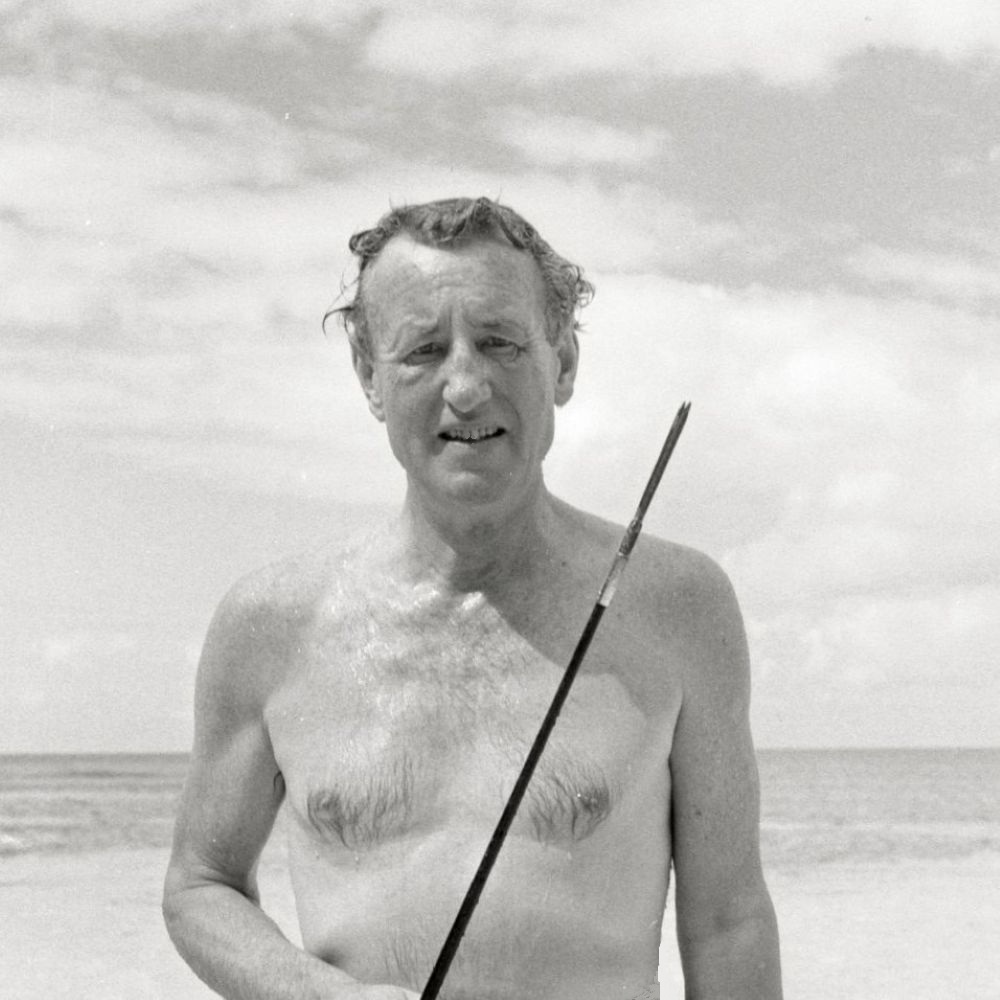
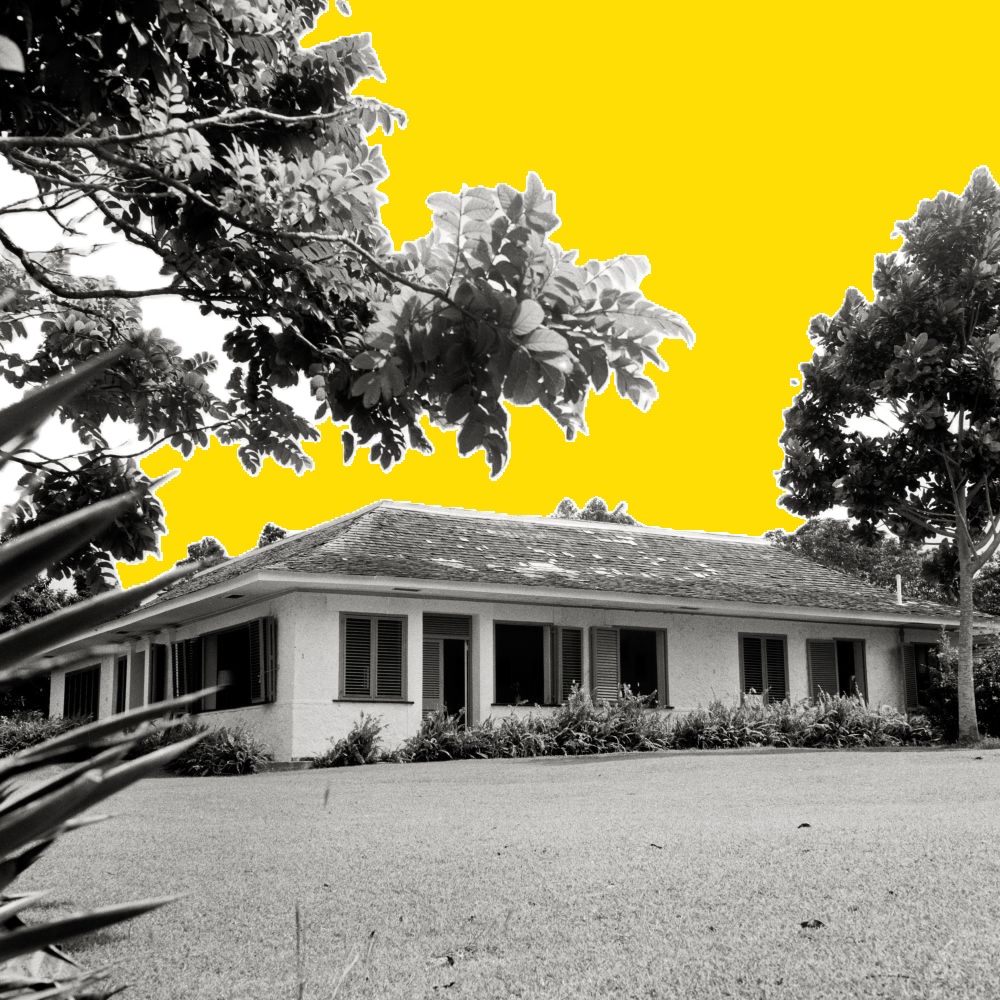
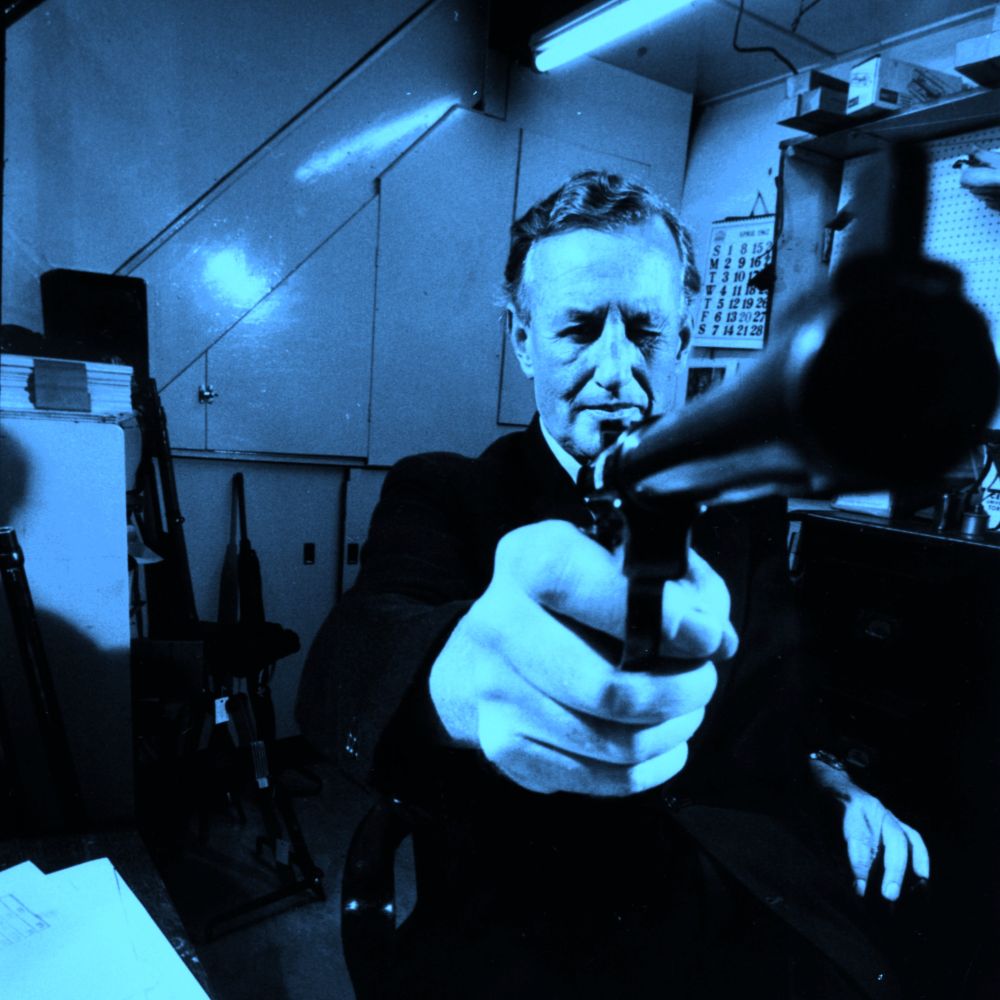
His own travels, interests and wartime experience give authority to everything he writes, with Raymond Chandler hailing him ‘the most forceful and driving writer of thrillers in England.’
Ian’s fifth James Bond adventure, From Russia With Love, is particularly well received and sales soar when President Kennedy names it as one of his favourite books. Ian oversees the transfer of his 007 novels to screen, starting with Dr. No in 1962, with Sean Connery starring as Bond.
On 12 August 1964 Fleming dies of heart failure in England, aged just 56. A few months later, Chitty Chitty Bang Bang, a children’s story about a magical car written for his son Caspar, is published and goes on to become a well-loved film.
With sales of over 100 million copies, Ian’s novels continue to connect with readers around the world, and his characters, gadgets and stories are part of the global cultural landscape. Ian Fleming’s legacy lives on.
'REMEMBER HIM...
...with his foot on the accelerator, laughing at absurdities, enjoying discoveries, absorbed in his many interests and plans, fascinated and amused by places and people and facts and fantasies, an entertainer of millions, and for us a friend never to be forgotten.’
William Plomer, Ian's long time friend and editor
KEY DATES
 1908
1908
Birth
Ian Lancaster Fleming is born in London on 28th May 1908, the second of four boys, to Valentine and Evelyn Fleming. Valentine is MP for Henley and the son of wealthy Scottish financier and philanthropist, Robert Fleming.
 1917
1917
Valentine’s death
In the early morning of 20th May 1917, Ian’s father Valentine is hit by a shell and killed instantly. News of the tragedy reach the family just before Ian’s ninth birthday.
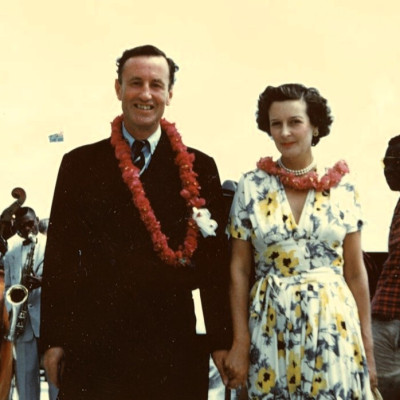 1952
1952
Marriage
Anne Charteris Harmsworth and Ian are married in March 1952, after a long term affair. Ian jokes that he starts Casino Royale, his first novel, in Feb 1952 to distract himself from his looming nuptials. He describes 'a marvellous honeymoon among hummingbirds and barracudas.'
 1952
1952
Caspar is born
In August 1952 Anne gives birth to Ian’s only child, a son, Caspar. A few weeks after the birth, Ian writes to a friend, ‘If it were possible to make a better man out of me, he is certainly assisting the process.’
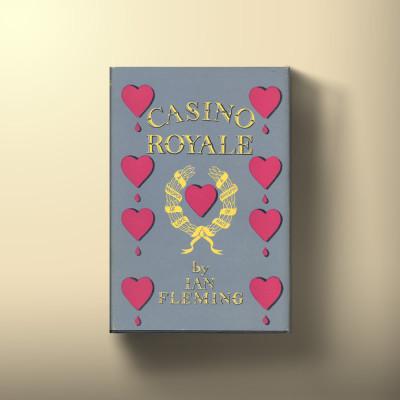 1953
1953
Casino Royale is published
Started in February 1952, Ian's first James Bond novel is released on 13th April 1953 by Jonathan Cape in the UK. An instant success, it has three print runs in quick succession and provokes rave reviews such as Time Magazine’s, ‘Casino Royale introduces a brand new mystery writer, Briton Ian Fleming, and a hard-shelled British secret service operative, James Bond, who should be prowling the international underground for some books to come.’
 1954
1954
Live and Let Die is published
Bond's second adventure has a deeply authentic feel, with Fleming undertaking detailed scene-setting, fact-finding missions to key locations before settling into his 2,000 words-a-day writing regime. It earned him high praise, including the enthusiastic Sunday Times review, ‘Speed… tremendous zest… communicated excitement. Brrh! How wincingly well Mr Fleming writes.’
 1955
1955
Moonraker is published
Set in London and Kent where Fleming spends most weekends at his beloved Royal St George’s Golf Club, Moonraker is a thoroughly British affair. It's also the first time James Bond fails to win the heart of the book’s heroine, police officer Gala Brand. Alternative titles under consideration include Wide of the Mark, The Inhuman Element and the startlingly gloomy Mondays are Hell.
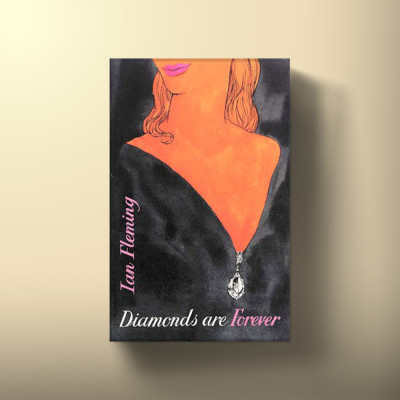 1956
1956
Diamonds are Forever is published
In NYC, on his way home from GoldenEye in March 1954, Fleming notices an advertisement in American Vogue, ‘A Diamond is Forever’. This sparks his imagination and sends Bond on his next mission, investigating the spectacular world of international diamond smuggling. The book’s cover is painted by Pat Marriott, the wife of Cape publisher, Michael Howard.
 April 1957
April 1957
From Russia With Love is published
After writing three James Bond novels, Ian Fleming is growing weary of his hero. His fifth novel sees Bond pitted against SMERSH, with excellently drawn villains and a wide open cliff-hanger of an ending. Will 007 return?
 November 1957
November 1957
The Diamond Smugglers is published
Alongside writing his 007 books, Fleming continues as a journalist at the Sunday Times. In 1957 the paper invites him to write a story about diamond smuggling and the International Diamond Security Organisation, an area Fleming is familiar with after extensively researching Diamonds are Forever. The Sunday Times serialise the book over six weeks in September 1957 and Cape publish it in November that same year.
 1958
1958
Dr. No is published
Fleming’s most fantastical James Bond adventure to date. With a luxurious underground lair in the Bahamas, a giant squid for a pet and steel pincers for hands, the eponymous villain proves to be one of his most unforgettable characters.
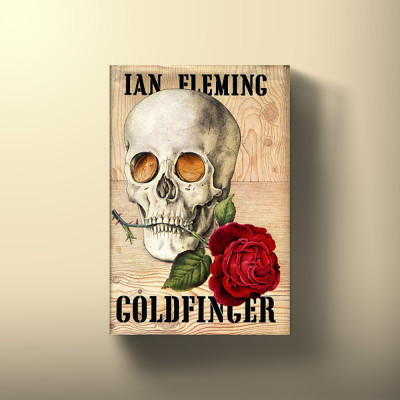 1959
1959
Goldfinger is published
Fleming’s seventh Bond novel follows the pursuits of a wealthy criminal with a penchant for torture. It includes iconic scenes, such as the girl suffocated by gold body paint and 007 strapped to a table as a circular saw moves slowly towards his groin. Like From Russia with Love, the book's cover is illustrated by Richard Chopping who creates the art for every UK first edition Bond cover from this point forward.
 1960
1960
For Your Eyes Only is published
A collection of five short 007 stories – some concieved as outlines for TV features, whilst the short story 'Quantum of Solace' pays homage to Ian's friend, playwright and novelist W. Somerset Maugham.
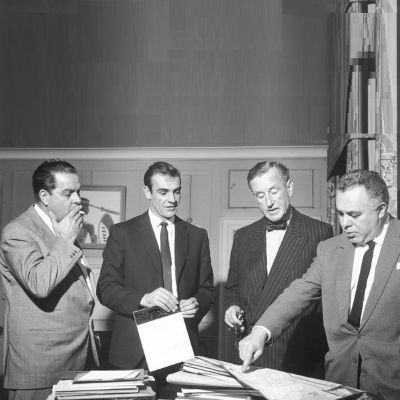 1961
1961
James Bond into film
Albert R. ‘Cubby’ Broccoli and Harry Saltzman, of EON Productions, set about transforming Ian Fleming's 007 books into films. The producers name their company EON after the phrase 'everything or nothing', and their holding company Danjaq after their wives’ first names – Dana and Jacqueline.
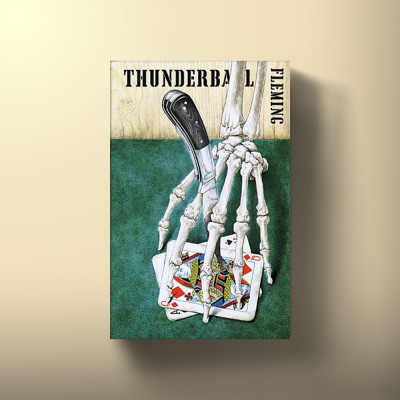 March 1961
March 1961
Thunderball is published
Keen to bring Bond to the big screen, Ian writes a treatment for a new story. His friend Ivar Bryce and producer, Kevin McClory add to it and it eventually forms the outline for the Thunderball novel. While Ian isn't proud of his efforts, the New York Times describe it as ‘a thriller, a chiller and a pleasure to read.’
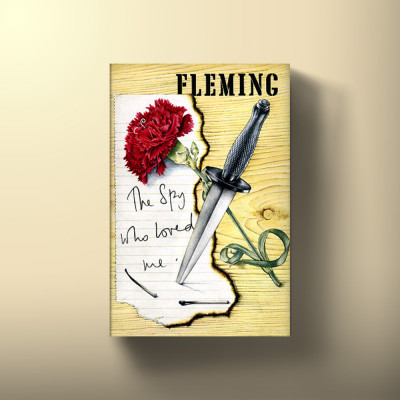 1962
1962
The Spy Who Loved Me is published
Against the backdrop of failing health and marriage, Fleming breaks away from his usual writing formula and writes from the point of view of Vivienne Michel, a heart-broken young woman who gets tangled-up in an ill-fated insurance scam at an isolated motel in New York State before being rescued by 007.
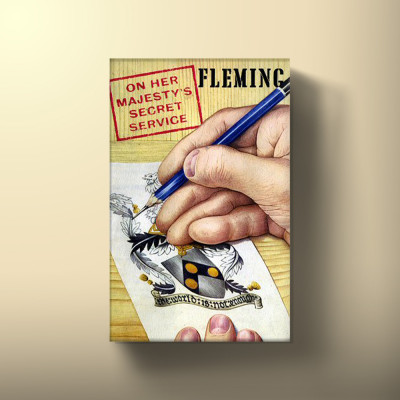 April 1963
April 1963
On Her Majesty’s Secret Service is published
Calling on his experiences at the Tennerhof in the 1930s, Ian's story transports readers to the Alps and brings back Bond’s adversary from Thunderball, Ernst Stavro Blofeld.
 November 1963
November 1963
Thrilling Cities is published
Ian's Sunday Times travel articles are brought together in one book. Delving into cities as varied and interesting as Hong Kong, Honolulu, Las Vegas, Berlin, and Monte Carlo, the collection provides a unique insight into locations at a time of great change.
 March 1964
March 1964
You Only Live Twice is published
Set in Japan, this is the last 007 novel to be published in Fleming's lifetime. It gives readers a detailed understanding of Bond’s past and sees the return of his nemesis Blofeld, thus concluding his ‘Blofeld trilogy’.
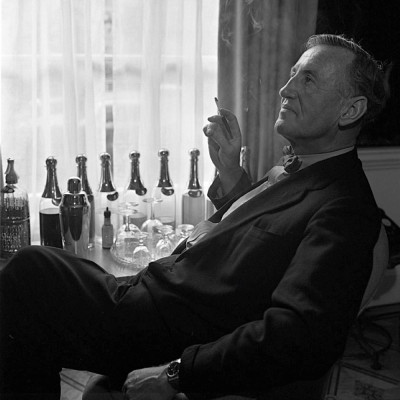 1964
1964
Death
After a heart attack in 1961, Ian’s health gradually deteriorates. At Easter 1964 he plays a round of golf in the rain, drive home in wet clothes and develops pleurisy, ending up in hospital. His mother Evelyn passes away in July and a few weeks later, on 11th August he is in Kent to be elected Captain of the Royal St. George’s Golf Club, when he suffers a heart attack after dinner. The following morning, on his son Caspar’s twelfth birthday, Ian Fleming dies at the age of 56.
 October 1964
October 1964
Chitty Chitty Bang Bang is published
Written whilst convalescing after his heart attack in 1961, Ian's one and only book for children is inspired by the bedtime stories he has dreamed up for his son, Caspar.
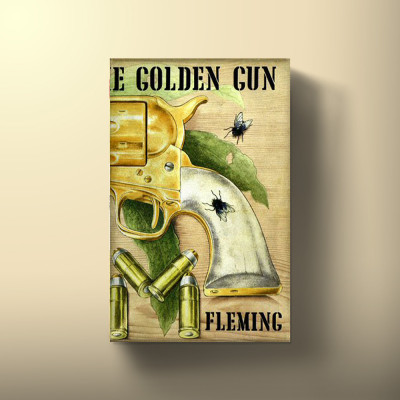 1965
1965
The Man with the Golden Gun is published
Delivered in manuscript form before his death, Fleming's final final James Bond novel is redrafted and edited by author Kingsley Amis before being published.
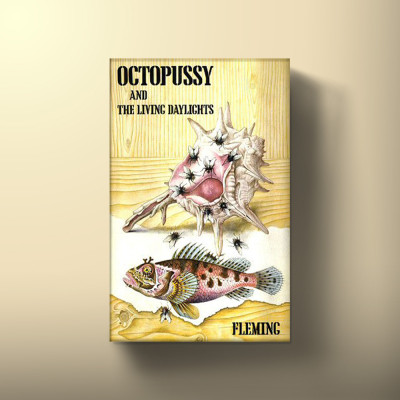 1966
1966
Octopussy and The Living Daylights is published
The final release of Ian Fleming's James Bond adventures. The book is a collection of 007 short stories and features 'Octopussy', 'The Living Daylights', 'The Property of a Lady' and '007 in New York'.
KEY DATES
 1908
1908
Birth
Ian Lancaster Fleming is born in London on 28th May 1908, the second of four boys, to Valentine and Evelyn Fleming. Valentine is MP for Henley and the son of wealthy Scottish financier and philanthropist, Robert Fleming.
 1917
1917
Valentine’s death
In the early morning of 20th May 1917, Ian’s father Valentine is hit by a shell and killed instantly. News of the tragedy reach the family just before Ian’s ninth birthday.
 1952
1952
Marriage
Anne Charteris Harmsworth and Ian are married in March 1952, after a long term affair. Ian jokes that he starts Casino Royale, his first novel, in Feb 1952 to distract himself from his looming nuptials. He describes 'a marvellous honeymoon among hummingbirds and barracudas.'
 1952
1952
Caspar is born
In August 1952 Anne gives birth to Ian’s only child, a son, Caspar. A few weeks after the birth, Ian writes to a friend, ‘If it were possible to make a better man out of me, he is certainly assisting the process.’
 1953
1953
Casino Royale is published
Started in February 1952, Ian's first James Bond novel is released on 13th April 1953 by Jonathan Cape in the UK. An instant success, it has three print runs in quick succession and provokes rave reviews such as Time Magazine’s, ‘Casino Royale introduces a brand new mystery writer, Briton Ian Fleming, and a hard-shelled British secret service operative, James Bond, who should be prowling the international underground for some books to come.’
 1954
1954
Live and Let Die is published
Bond's second adventure has a deeply authentic feel, with Fleming undertaking detailed scene-setting, fact-finding missions to key locations before settling into his 2,000 words-a-day writing regime. It earned him high praise, including the enthusiastic Sunday Times review, ‘Speed… tremendous zest… communicated excitement. Brrh! How wincingly well Mr Fleming writes.’
 1955
1955
Moonraker is published
Set in London and Kent where Fleming spends most weekends at his beloved Royal St George’s Golf Club, Moonraker is a thoroughly British affair. It's also the first time James Bond fails to win the heart of the book’s heroine, police officer Gala Brand. Alternative titles under consideration include Wide of the Mark, The Inhuman Element and the startlingly gloomy Mondays are Hell.
 1956
1956
Diamonds are Forever is published
In NYC, on his way home from GoldenEye in March 1954, Fleming notices an advertisement in American Vogue, ‘A Diamond is Forever’. This sparks his imagination and sends Bond on his next mission, investigating the spectacular world of international diamond smuggling. The book’s cover is painted by Pat Marriott, the wife of Cape publisher, Michael Howard.
 April 1957
April 1957
From Russia With Love is published
After writing three James Bond novels, Ian Fleming is growing weary of his hero. His fifth novel sees Bond pitted against SMERSH, with excellently drawn villains and a wide open cliff-hanger of an ending. Will 007 return?
 November 1957
November 1957
The Diamond Smugglers is published
Alongside writing his 007 books, Fleming continues as a journalist at the Sunday Times. In 1957 the paper invites him to write a story about diamond smuggling and the International Diamond Security Organisation, an area Fleming is familiar with after extensively researching Diamonds are Forever. The Sunday Times serialise the book over six weeks in September 1957 and Cape publish it in November that same year.
 1958
1958
Dr. No is published
Fleming’s most fantastical James Bond adventure to date. With a luxurious underground lair in the Bahamas, a giant squid for a pet and steel pincers for hands, the eponymous villain proves to be one of his most unforgettable characters.
 1959
1959
Goldfinger is published
Fleming’s seventh Bond novel follows the pursuits of a wealthy criminal with a penchant for torture. It includes iconic scenes, such as the girl suffocated by gold body paint and 007 strapped to a table as a circular saw moves slowly towards his groin. Like From Russia with Love, the book's cover is illustrated by Richard Chopping who creates the art for every UK first edition Bond cover from this point forward.
 1960
1960
For Your Eyes Only is published
A collection of five short 007 stories – some concieved as outlines for TV features, whilst the short story 'Quantum of Solace' pays homage to Ian's friend, playwright and novelist W. Somerset Maugham.
 March 1961
March 1961
Thunderball is published
Keen to bring Bond to the big screen, Ian writes a treatment for a new story. His friend Ivar Bryce and producer, Kevin McClory add to it and it eventually forms the outline for the Thunderball novel. While Ian isn't proud of his efforts, the New York Times describe it as ‘a thriller, a chiller and a pleasure to read.’
 1962
1962
The Spy Who Loved Me is published
Against the backdrop of failing health and marriage, Fleming breaks away from his usual writing formula and writes from the point of view of Vivienne Michel, a heart-broken young woman who gets tangled-up in an ill-fated insurance scam at an isolated motel in New York State before being rescued by 007.
 April 1963
April 1963
On Her Majesty’s Secret Service is published
Calling on his experiences at the Tennerhof in the 1930s, Ian's story transports readers to the Alps and brings back Bond’s adversary from Thunderball, Ernst Stavro Blofeld.
 November 1963
November 1963
Thrilling Cities is published
Ian's Sunday Times travel articles are brought together in one book. Delving into cities as varied and interesting as Hong Kong, Honolulu, Las Vegas, Berlin, and Monte Carlo, the collection provides a unique insight into locations at a time of great change.
 March 1964
March 1964
You Only Live Twice is published
Set in Japan, this is the last 007 novel to be published in Fleming's lifetime. It gives readers a detailed understanding of Bond’s past and sees the return of his nemesis Blofeld, thus concluding his ‘Blofeld trilogy’.
 1964
1964
Death
After a heart attack in 1961, Ian’s health gradually deteriorates. At Easter 1964 he plays a round of golf in the rain, drive home in wet clothes and develops pleurisy, ending up in hospital. His mother Evelyn passes away in July and a few weeks later, on 11th August he is in Kent to be elected Captain of the Royal St. George’s Golf Club, when he suffers a heart attack after dinner. The following morning, on his son Caspar’s twelfth birthday, Ian Fleming dies at the age of 56.
 October 1964
October 1964
Chitty Chitty Bang Bang is published
Written whilst convalescing after his heart attack in 1961, Ian's one and only book for children is inspired by the bedtime stories he has dreamed up for his son, Caspar.
 1965
1965
The Man with the Golden Gun is published
Delivered in manuscript form before his death, Fleming's final final James Bond novel is redrafted and edited by author Kingsley Amis before being published.
 1966
1966
Octopussy and The Living Daylights is published
The final release of Ian Fleming's James Bond adventures. The book is a collection of 007 short stories and features 'Octopussy', 'The Living Daylights', 'The Property of a Lady' and '007 in New York'.
 1961
1961
James Bond into film
Albert R. ‘Cubby’ Broccoli and Harry Saltzman, of EON Productions, set about transforming Ian Fleming's 007 books into films. The producers name their company EON after the phrase 'everything or nothing', and their holding company Danjaq after their wives’ first names – Dana and Jacqueline.

